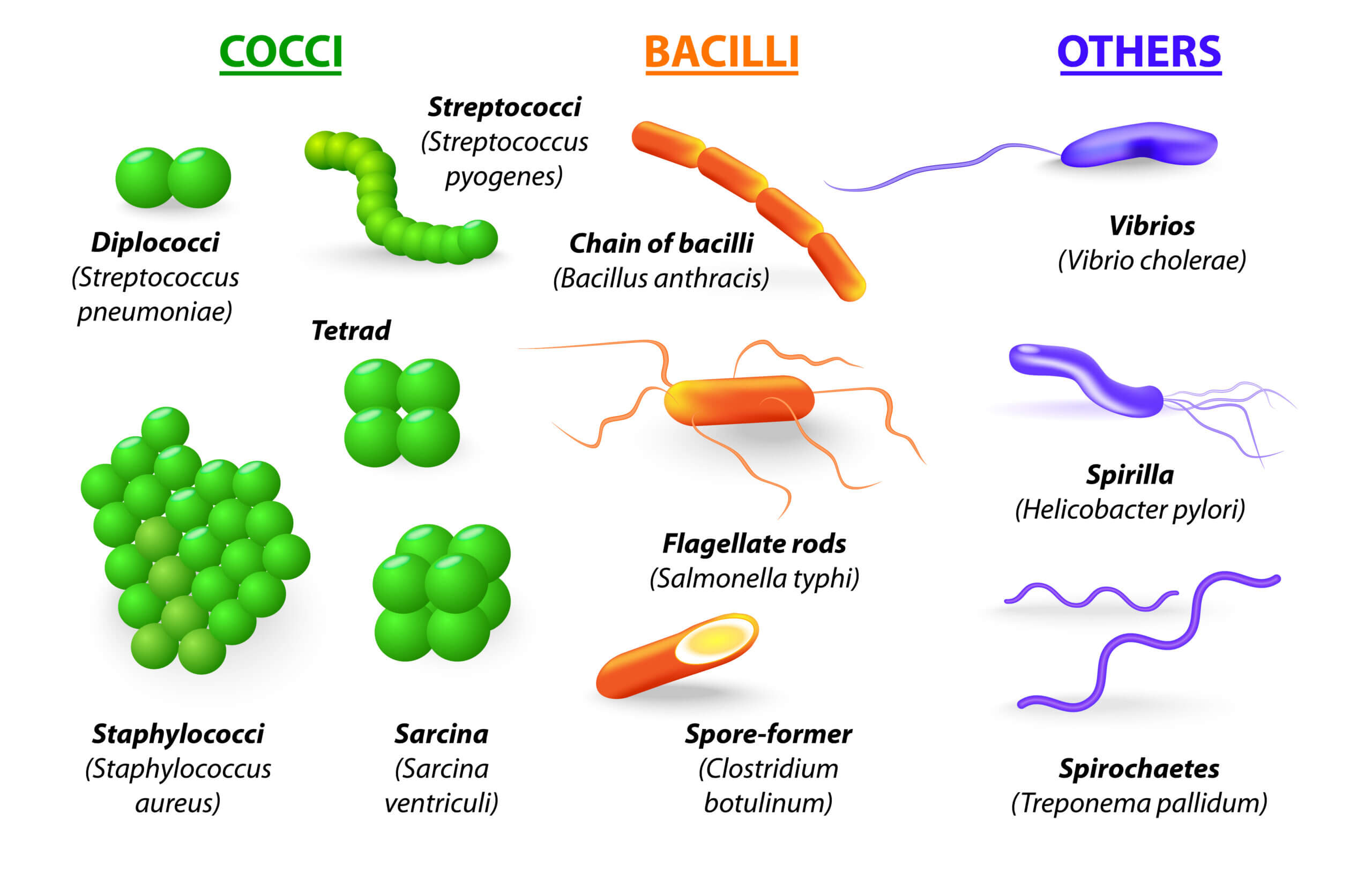Bacteria are microscopic, single-celled organisms. They are among the earliest known life forms on earth. There are thousands of different kinds of bacteria, and they live in every conceivable environment worldwide.
Only a few kinds of bacteria cause disease, and these are referred to as pathogens. Colonisation describes when bacteria grow on body sites exposed to the environment without causing any infection. This is a normal process and is not pathological.
Bacteria can cause disease by producing harmful substances (toxins), invading tissues, or doing both. Some bacteria can trigger inflammation that may affect the heart, nervous system, kidneys, or gastrointestinal tract. Other bacteria, for example, Helicobacter pylori, can increase the risk of developing cancer.
Bacteria can be classified in a number of different ways, including:
- Genus
- Shape
- Staining characteristics
- Oxygen requirement
Classification by genus
Bacteria, like other living things, are classified by genus (based on having one or several similar characteristics) and, within the genus, by species.
Their scientific name is genus followed by species (for example, Clostridium botulinum). Within a species, there may be different types, called strains. Strains differ in genetic makeup and chemical components. Sometimes certain drugs and vaccines are effective only against certain strains.
Classification by shape
All bacteria may be classified according to their shape. The main types are spheres (cocci), rods (bacilli), spirals (spirochetes), and comma-shaped (vibrio).

Classification by staining
Bacteria may be classified by the colour they turn after certain chemicals (stains) are applied to them.
Gram staining is a commonly used staining process. Bacteria that stain blue are referred to as being Gram-positive, while those that stain red are referred to as being Gram-negative. Gram-positive and gram-negative bacteria stain differently because their cell walls are different. They also cause different types of infections, and different types of antibiotics are effective against them.
Other staining techniques include the endospore stain (to identify endospore-forming bacteria), the acid-fast stain (to discriminate Mycobacterium species from other bacteria), a metachromatic stain to identify phosphate storage granules, and the capsule stain (to identify encapsulated bacteria).
Bacteria are very commonly classified using a combination of their shape and Gram-staining characteristics. The following table summarises some bacteria commonly classified this way:
| Type of bacteria | Notable examples |
|---|---|
| Gram-negative cocci | Neisseria meningitidis Neisseria gonorrhoeae |
| Gram-positive cocci | Staphylococcus aureus Staphylococcus epidermidis Streptococcus pneumoniae Streptococcus pyogenes |
| Gram-negative bacilli | Escherichia coli Salmonella spp. Legionella spp. |
| Gram-positive bacilli | Clostridium tetani Clostridium botulinum Bacillus anthracis Listeria monocytogenes |
Classification by oxygen requirements
Bacteria are also classified by whether they need oxygen to live and grow.
- Obligate aerobic bacteria are bacteria that require oxygen to grow
- Obligate anaerobic bacteria are bacteria that live and grow in the absence of oxygen
- Facultative anaerobic bacteria make ATP via aerobic respiration and are also capable of switching to fermentation
- Micro-aerophilic bacteria are bacteria that require oxygen to survive but require environments containing lower levels of oxygen than are present in the atmosphere.
The following table gives notable examples of each of these types of bacteria:
| Type of bacteria | Notable examples |
|---|---|
| Facultative anaerobe | Staphylococcus spp. Streptococcus spp. Escherichia coli Listeria spp. |
| Obligate aerobe | Mycobacterium tuberculosis Pseudomonas aeruginosa Bacillus spp. |
| Obligate anaerobe | Bacteroides spp. Clostridium spp. Treponema spp. Actinomyces spp. |
| Micro-aerophile | Campylobacter jejuni Helicobacter pylori |
Image used on licence from Shutterstock.
Thank you to the joint editorial team of www.mrcemexamprep.net for this article.






